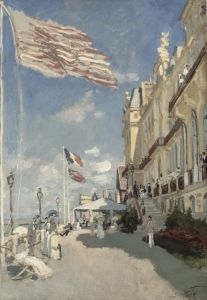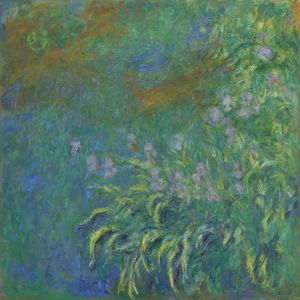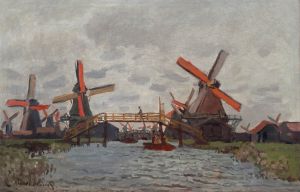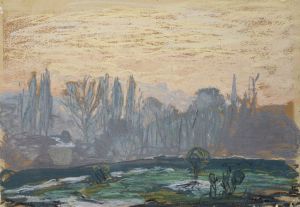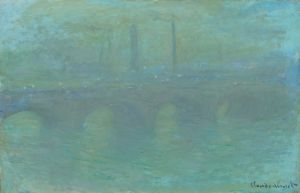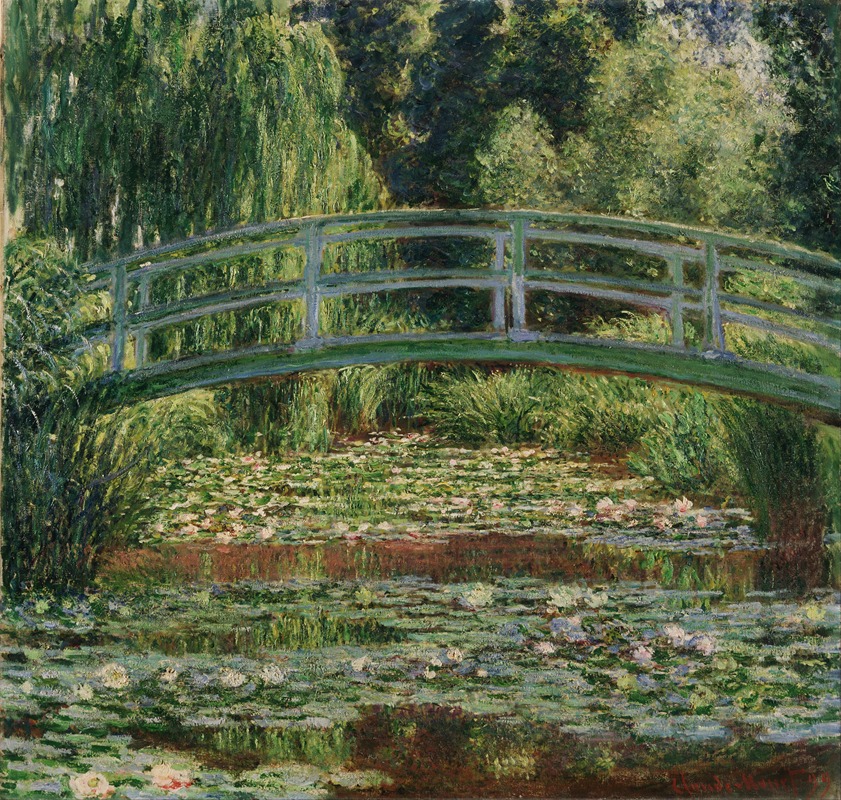
The Japanese Footbridge and the Water Lily Pool, Giverny
A hand-painted replica of Claude Monet’s masterpiece The Japanese Footbridge and the Water Lily Pool, Giverny, meticulously crafted by professional artists to capture the true essence of the original. Each piece is created with museum-quality canvas and rare mineral pigments, carefully painted by experienced artists with delicate brushstrokes and rich, layered colors to perfectly recreate the texture of the original artwork. Unlike machine-printed reproductions, this hand-painted version brings the painting to life, infused with the artist’s emotions and skill in every stroke. Whether for personal collection or home decoration, it instantly elevates the artistic atmosphere of any space.
Claude Monet's "The Japanese Footbridge and the Water Lily Pool, Giverny" is a celebrated painting that exemplifies the artist's profound connection with his garden in Giverny, France. Monet, a leading figure in the Impressionist movement, is renowned for his innovative use of color and light, and this painting is a quintessential example of his mature style.
Monet moved to Giverny in 1883, where he meticulously designed and cultivated a garden that would become the primary inspiration for his work in the latter part of his life. The garden featured a water lily pond and a Japanese-style footbridge, both of which became recurring motifs in his paintings. Monet's fascination with the interplay of light, water, and plant life is vividly captured in this series of works.
"The Japanese Footbridge and the Water Lily Pool" was painted in 1899, during a period when Monet was intensely focused on capturing the transient effects of light and atmosphere. This painting is part of a series that Monet created, each depicting the footbridge from different angles and under varying light conditions. The series reflects Monet's dedication to exploring the nuances of natural light and its impact on color and form.
In this particular painting, Monet employs a vibrant palette dominated by greens, blues, and pinks. The composition centers on the arched footbridge, which is reflected in the tranquil waters of the lily pond below. The surface of the water is dotted with water lilies, their delicate forms contrasting with the bold, sweeping brushstrokes that characterize the surrounding foliage. Monet's technique involves the use of short, broken brushstrokes that create a shimmering effect, capturing the ephemeral quality of light on water.
The painting is notable for its lack of linear perspective, a hallmark of Monet's later work. Instead, the composition is flattened, with the bridge and water lilies appearing almost as a tapestry of color and texture. This approach emphasizes the surface of the canvas and draws attention to the act of painting itself, a key aspect of Impressionist art.
Monet's water lily paintings, including "The Japanese Footbridge and the Water Lily Pool," were groundbreaking in their abstraction and are often seen as precursors to 20th-century modernist movements. The emphasis on color and form over representational accuracy paved the way for artists like Wassily Kandinsky and Jackson Pollock, who further explored abstraction in their work.
Today, "The Japanese Footbridge and the Water Lily Pool" is housed in various collections, with different versions displayed in museums around the world. These paintings continue to be celebrated for their beauty and innovation, and they remain a testament to Monet's enduring legacy as a master of Impressionism.
Monet's work on the water lily series extended over several decades, culminating in the large-scale "Water Lilies" murals that are displayed in the Musée de l'Orangerie in Paris. These works, including "The Japanese Footbridge and the Water Lily Pool," are considered some of the most important contributions to the Impressionist movement and continue to captivate audiences with their serene beauty and technical brilliance.





